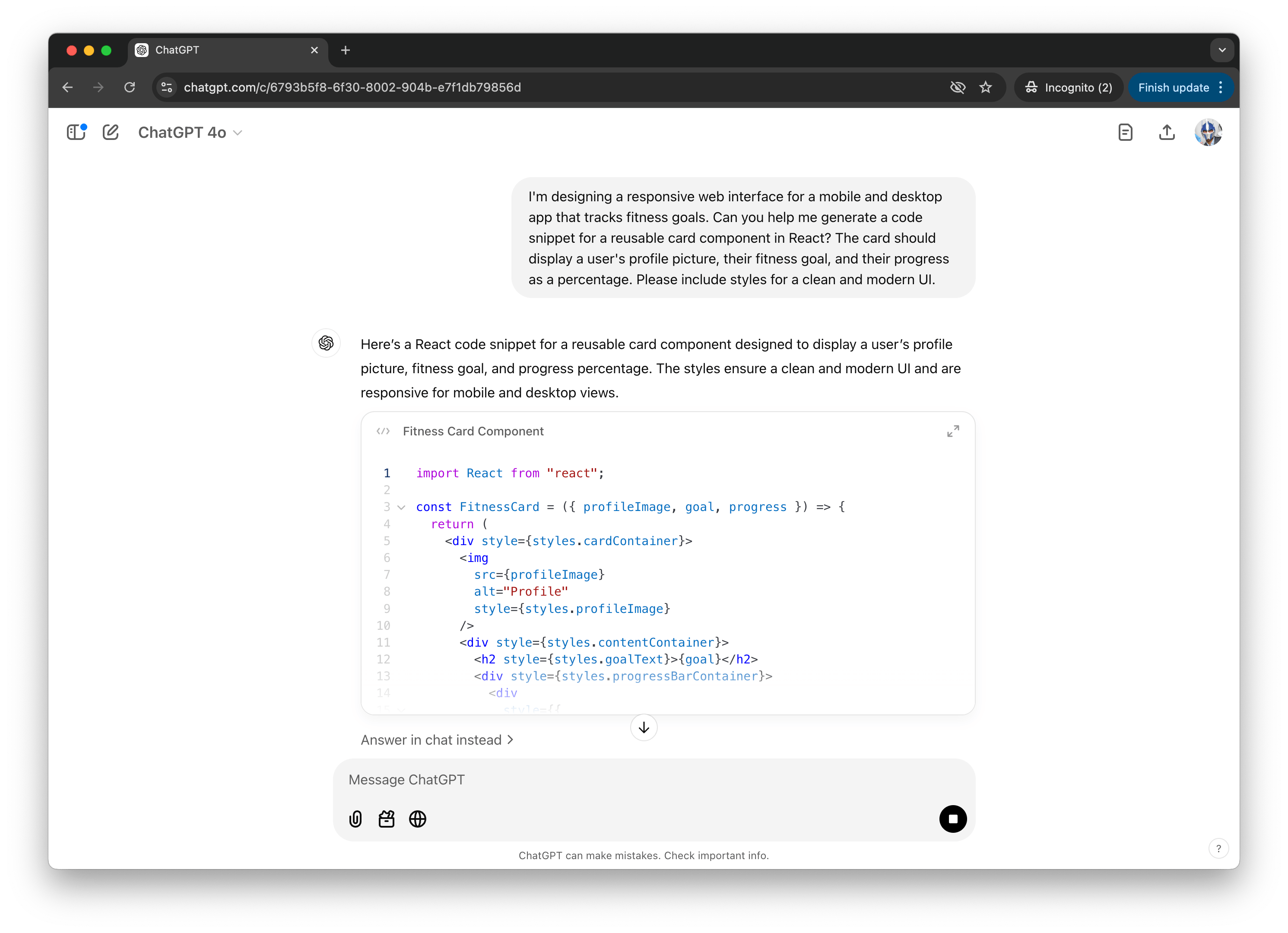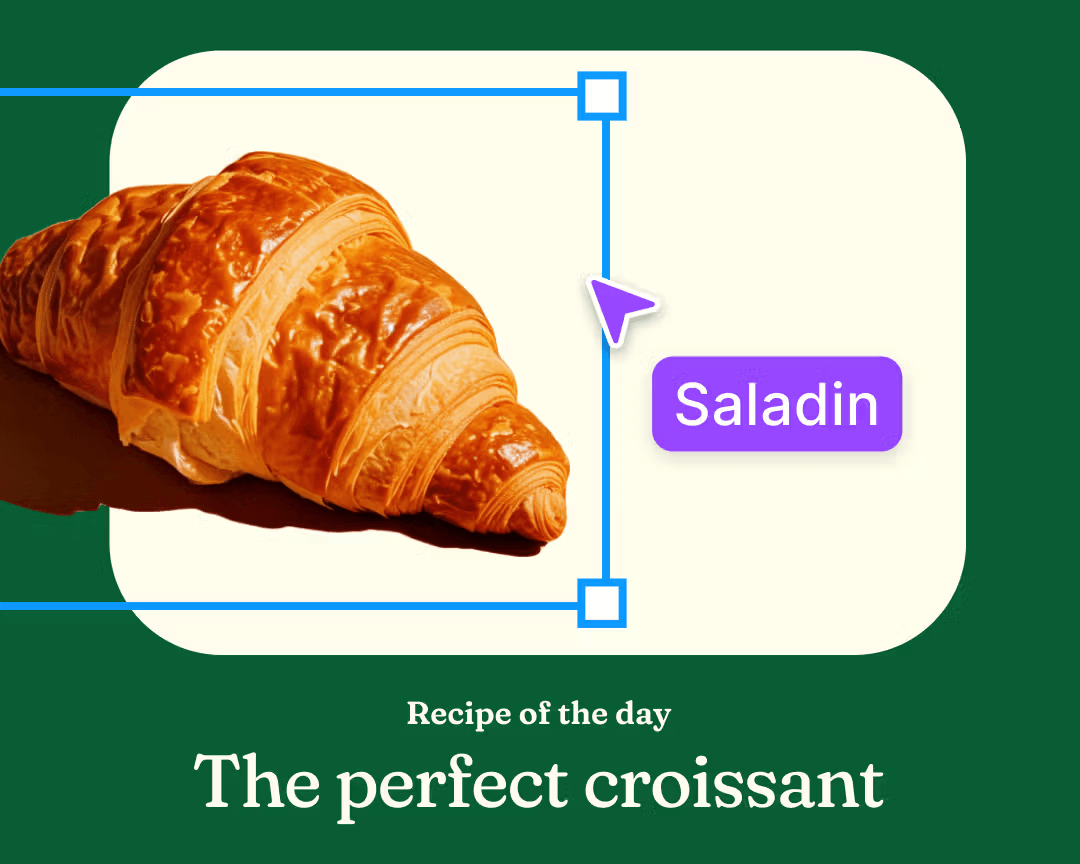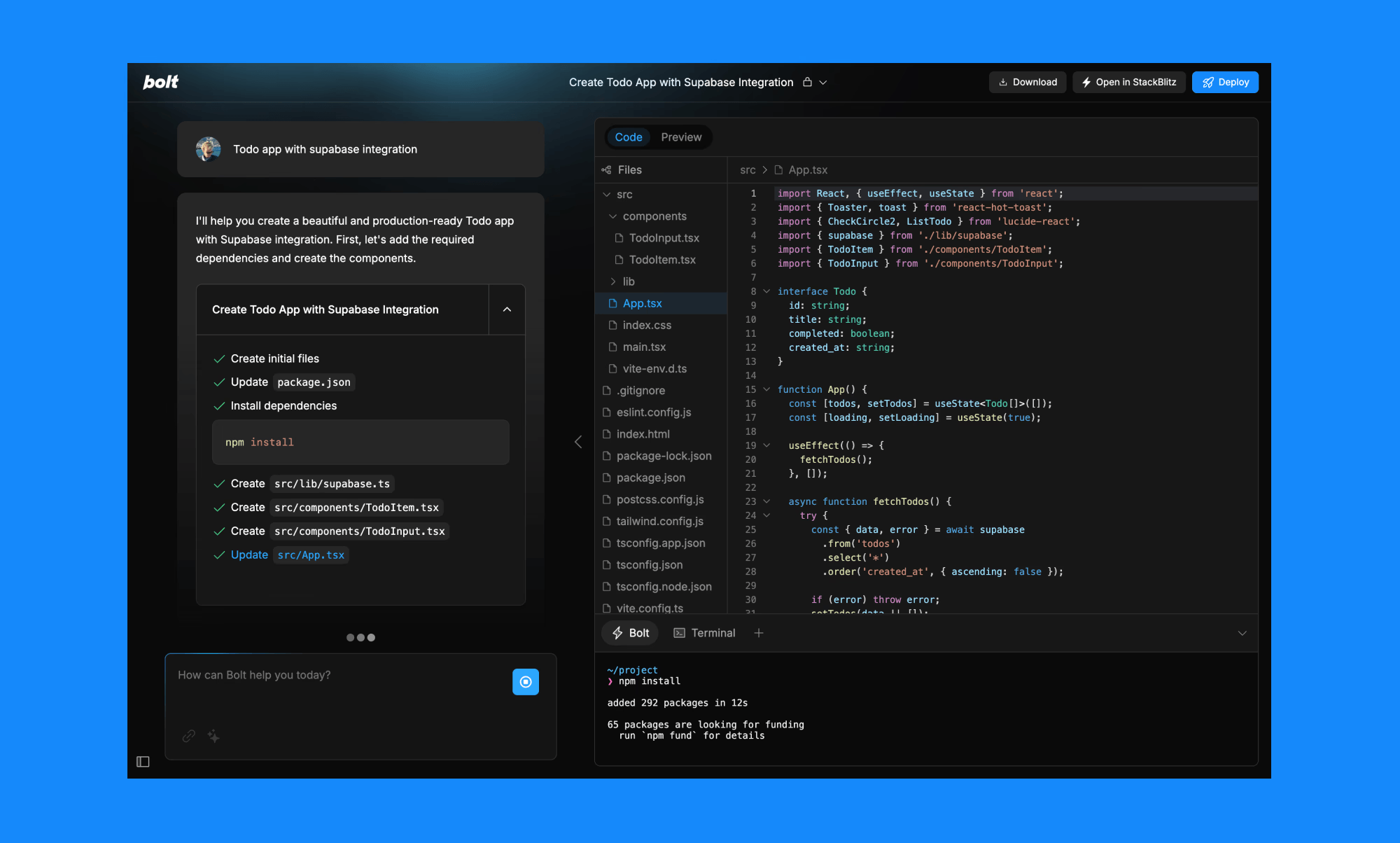The Future of AI in Design Engineering: Tools or Replacements?

Engineers have always used tools to improve their work. Rather than a job replacement, AI is powerful tool for design engineers to explore and leverage.
The role of design engineering, often considered a hybrid of design and technical expertise, has continually evolved with technological advancements. From the introduction of computer-aided design (CAD) tools in the late 20th century to the emergence of generative design algorithms in the 2010s, the relationship between design engineers and their tools has always been a partnership.
Today, another major transition is happening—one powered by integrating artificial intelligence (AI) into the design and coding experience to provide help and improved efficiency in software production. In today’s article, we’ll explore how AI is being used in the world of design engineering, its potential as a tool or replacement, and what it could mean for the future of the field.
Check out our previous article on how Software Development has changed with AI-Powered Code Editors.
What Is a Design Engineer?
A design engineer (DE) is a unique hybrid role that bridges the gap between design and engineering. As a translator and mediator, a DE combines technical expertise with a designer’s eye for detail, evolving creative visions into functional, practical solutions.
Design engineers play a pivotal role in aligning design and development teams in web and mobile software. By understanding both the creative and technical sides of a project, they enable more seamless collaboration, reduce friction in the design-to-code handoff and enhance the quality of the final product.
For this article, we discuss design engineers (DEs) in the context of software development, particularly in web and mobile contexts. DEs help navigate the complexities of frontend frameworks, component libraries and APIs while keeping user experience and design fidelity at the forefront.
For more details on the role of a design engineer and what it entails, be sure to check out this article in the designengineer.xyz blog—The Design Engineer.
Chat-Interface Tools
The rise of chat-interface tools like ChatGPT, Claude and DeepSeek has influenced the integration of AI into design engineering. These tools act as conversational assistants, providing immediate answers, generating ideas and drafting code or design documentation. For many design engineers, they’ve become collaborative partners in tackling challenges.

Some of these chat interface tools (like ChatGPT and Claude) excel in generating rapid solutions, whether crafting boilerplate code, explaining algorithms or suggesting ways to optimize workflows. Other tools, like DeepSeek, specialize in retrieving nuanced information from large datasets, making it helpful when analyzing historical project data or brainstorming solutions to design bottlenecks. These tools enable design engineers to offload repetitive or time-intensive tasks, freeing up bandwidth for more creative and strategic efforts.
AI-Enhanced Design Tools
While chat-interface tools make it easy for design engineers to quickly interact with AI, pivotal platforms like Figma and Builder.io have embedded AI into their workflows, improving the actual design process. Figma AI, for instance, introduces advanced features such as automated layout suggestions, instant mockup generation and intelligent alignment recommendations. These features empower designers and engineers to create better designs faster, all while maintaining the creative vision.

Builder.io extends this innovation by enabling developers and designers to work collaboratively on dynamic user interfaces. Its AI-powered components simplify complex workflows, allowing teams to iterate faster. With Builder.io, the line between design and engineering blurs even further, as engineers can integrate their work with the visual assets created by designers.
For design engineers, these AI-powered capabilities bring more efficiency. They facilitate experimentation, help avoid common design pitfalls and reduce the cognitive load associated with manual design iteration. Integrating these tools into their workflow allows DEs to focus more on innovation and less on repetitive tasks, fostering a culture of rapid prototyping and agile development.
Prototyping and Design with Code
As the boundaries between design and engineering continue to dissolve, tools like bolt.new and lovable.dev are taking center stage. bolt.new and lovable.dev (among other similar tools) are AI-powered web development platforms that allow developers to prompt, create, edit and deploy full-stack applications directly from their browser, all through an intuitive chat interface.

These tools empower design engineers to bridge the gap between static designs and functional applications. By leveraging AI, they can iterate on designs in real time, test ideas instantly and adapt quickly to feedback. Features like real-time previews, integrated deployment capabilities and support for importing assets from design tools like Figma eliminate much of the friction often associated with the traditional design-to-code workflow.
Can AI Do It All 😮?
While AI tools enhance productivity and efficiency, they raise questions about whether they could replace design engineering altogether. The truth is that while AI excels in performing defined tasks, it falls short in areas requiring human intuition, creativity and contextual understanding.
- Contextual judgment – AI can produce somewhat accurate designs or code snippets but often misses the broader project goals, such as balancing functionality with aesthetics or considering user experience nuances.
- Collaborative strategy – Design engineers are essential in bridging teams, aligning technical execution with business objectives and facilitating communication between designers and developers. This collaborative and strategic role remains far beyond AI’s capabilities today—and likely will be for a long time.
- Ethical and cultural awareness – Designing for diverse users involves ethical considerations and cultural sensitivity, areas where human judgment remains indispensable. AI lacks the understanding and adaptability to navigate these complexities.
Rather than replacing design engineers, AI is a powerful augmentation tool, enabling them to work faster and more efficiently. It frees them from repetitive tasks, allowing more time for innovation, problem-solving and collaboration—something we all want in our daily lives!

Hassan Djirdeh
Hassan is a senior frontend engineer and has helped build large production applications at-scale at organizations like Doordash, Instacart and Shopify. Hassan is also a published author and course instructor where he’s helped thousands of students learn in-depth frontend engineering skills like React, Vue, TypeScript, and GraphQL.

